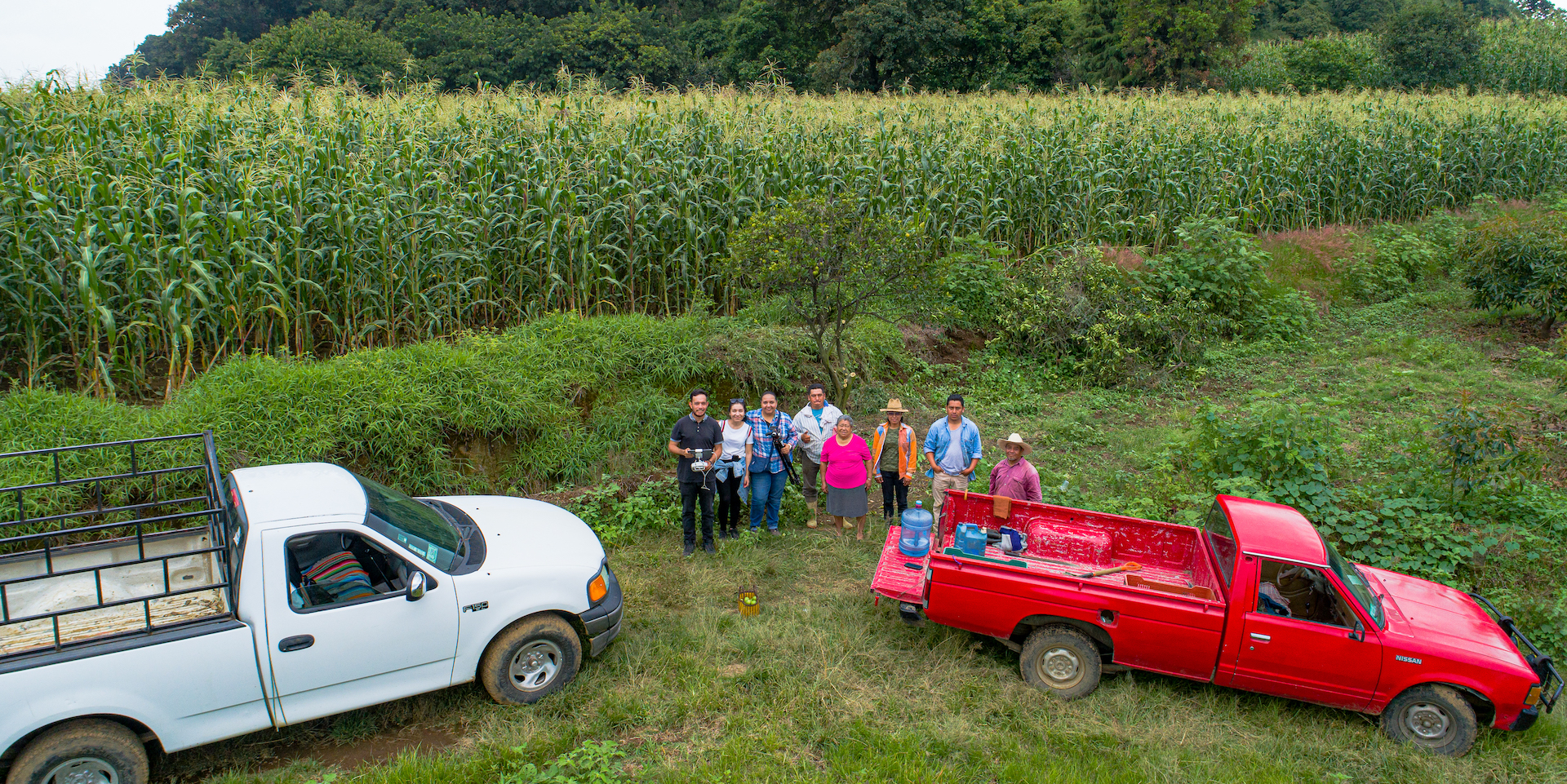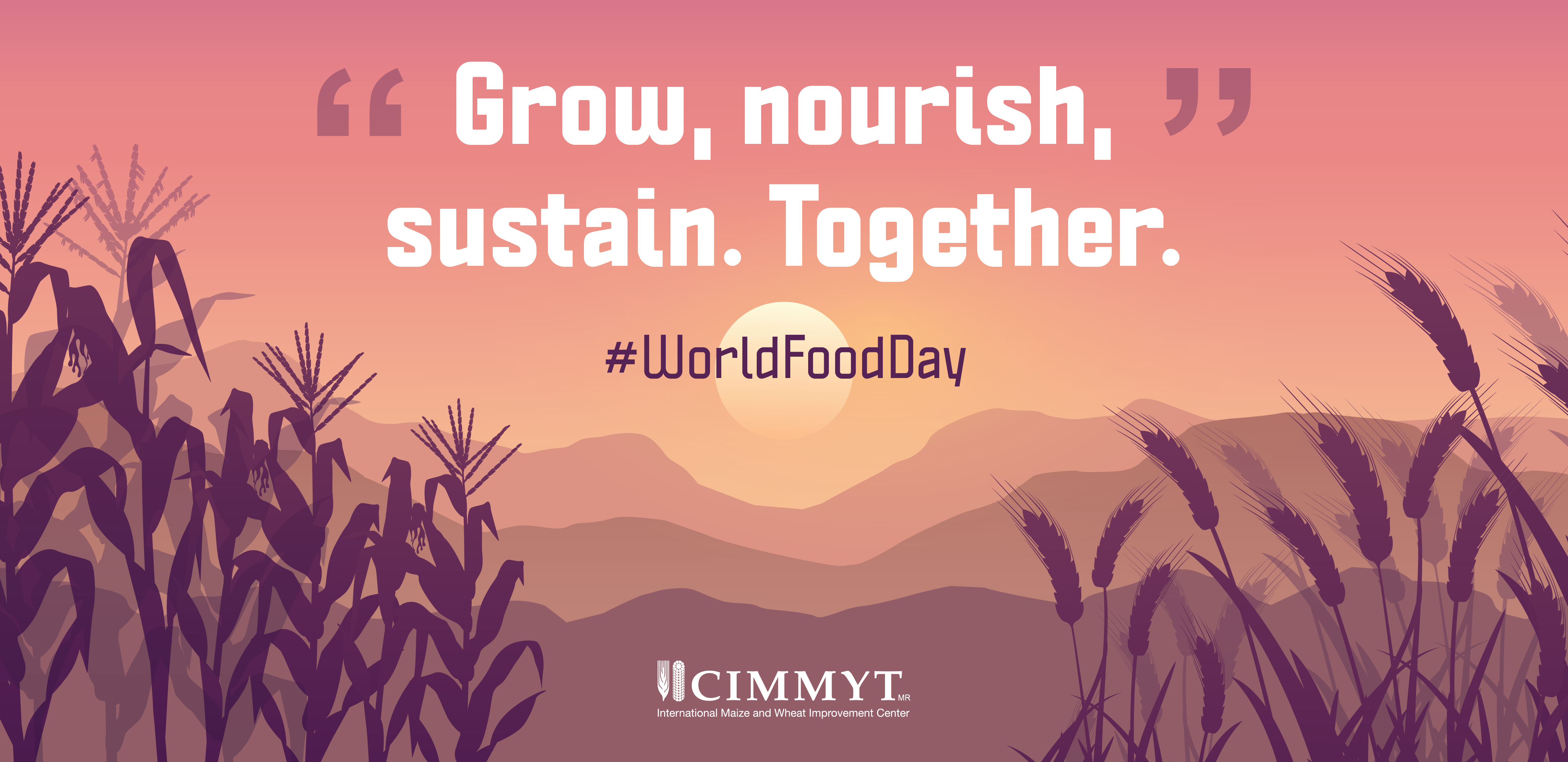This year opens the Decade of Family Farming (#FamilyFarmingDecade), which aims to improve the life of family farmers around the world. In an earnest discussion, two leaders in the global agriculture community reflect on the challenges facing family farmers, the promises of high- and low-tech solutions, and their hopes for the future.
A conversation between Martin Kropff, Director General of the International Maize and Wheat Improvement Centre (CIMMYT) and Trevor Nicholls, CEO of CABI.
On the unique challenges facing family farms
Trevor Nicholls (CABI): Family farmers come in many shapes and sizes but for me, the words “family farmer” bring a focus on smallholders and people who are starting on a journey of making a farming business. It depends on which part of the world you’re talking about; a family farm in the UK is perhaps very different to a small family farm in Ethiopia. And family farms can grow from just a small plot to being quite large commercial enterprises.
Martin Kropff (CIMMYT): All agriculture started with family farms. Fifty years ago in my home country, the Netherlands, farms were almost all family farms. When we look globally, farms in places like India, Pakistan, and Kenya are very often small, and the whole family is involved.
KROPFF: When the whole family is involved, gender dynamics come out. In a way, family farming is very often the farming done by women. This makes women the most important players in agriculture in many developing countries. It’s crucial to recognize this and understand their decision-making. For example, our research shows that men and women value different traits in crop varieties. We need to understand this to have successful interventions.
NICHOLLS: We’ve seen something similar through our Plantwise plant clinics, where farmers come for practical plant health advice. We see a definite pattern of men bringing in cash crops for advice, and women looking more at fruits and vegetables to feed their family. But overall, mostly men come into our clinics, particularly in certain parts of the world. We’re trying to encourage more female participation by timing the clinics so that they fit into women’s routines without getting in the way of taking care of elderly relatives or getting kids off to school. Sometimes really simple things can open up access and improve the gender balance.
KROPFF: When the whole family is involved, there are also downsides. In Africa, young people do much of the weeding.
NICHOLLS: That’s right, they may be pulled out of school for weeding.
KROPFF: This really worries me. Hand weeding is such hard labor, such an intensive use of energy; it seems like it should be something of the past. Children don’t want to do it anymore. My wife is from the generation where children still did weeding in the Netherlands. She remembers standing in the fields weeding when the sun was extremely warm while her friends were out doing other things.
NICHOLLS: It starts kids off on the wrong path, doesn’t it? If their experience of farming is backbreaking weeding from the age of 8 onwards, it’s highly unlikely to attract them into farming as a career.
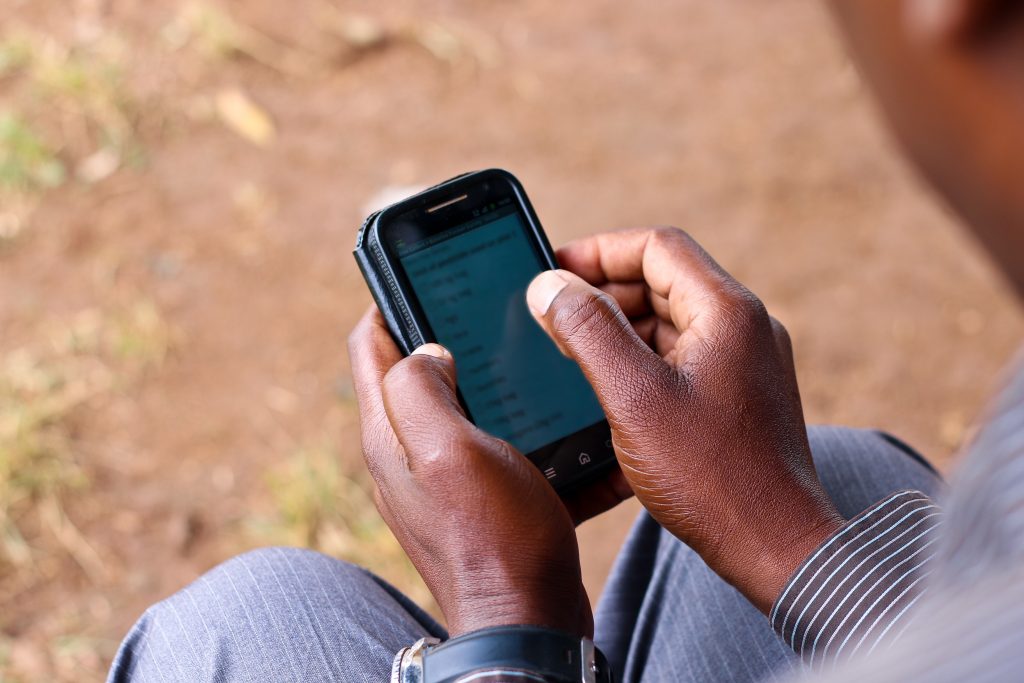
On keeping young people interested in farming
NICHOLLS: We need to look at things like weed control as a social issue. It’s possible, for example, to use beneficial insects to limit the spread of certain weeds that infest farmland. Biocontrol and Integrated Pest Management should be seen as ways of reducing the spread of certain weeds, and also as ways to reduce the burden on women and youth.
KROPFF: I agree. Similarly, we’re finding that small-scale mechanization is making a difference for youth, and also women’s labor in Latin America, Africa and Asia, where CIMMYT has been introducing two-wheel tractors that can be engineered in local workshops. Suddenly, smallholders can harvest the entire wheat crop of 20 families in one day. This saves so much time, money, and effort, eliminating some of the “bad” labor that may discourage youth and unfairly burden women. Farmers can focus on the “nice” aspects of the business. It’s a real game changer for family farming.
NICHOLLS: Yes and this can also be amplified through digital technology. People refer to the “Uber-ization” of tractors, where farmers are able to hire a piece of mechanical equipment for a very short space of time, and maybe it even comes with an experienced driver or operator. We’re finding that digital tools like artificial intelligence, satellite imaging, smartphones, and other modern technologies, will intrigue youth anywhere in the world. These will hopefully have an impact on bringing more youth back into farming, as they start to see it as technologically enabled rather than straightforward muscle power.
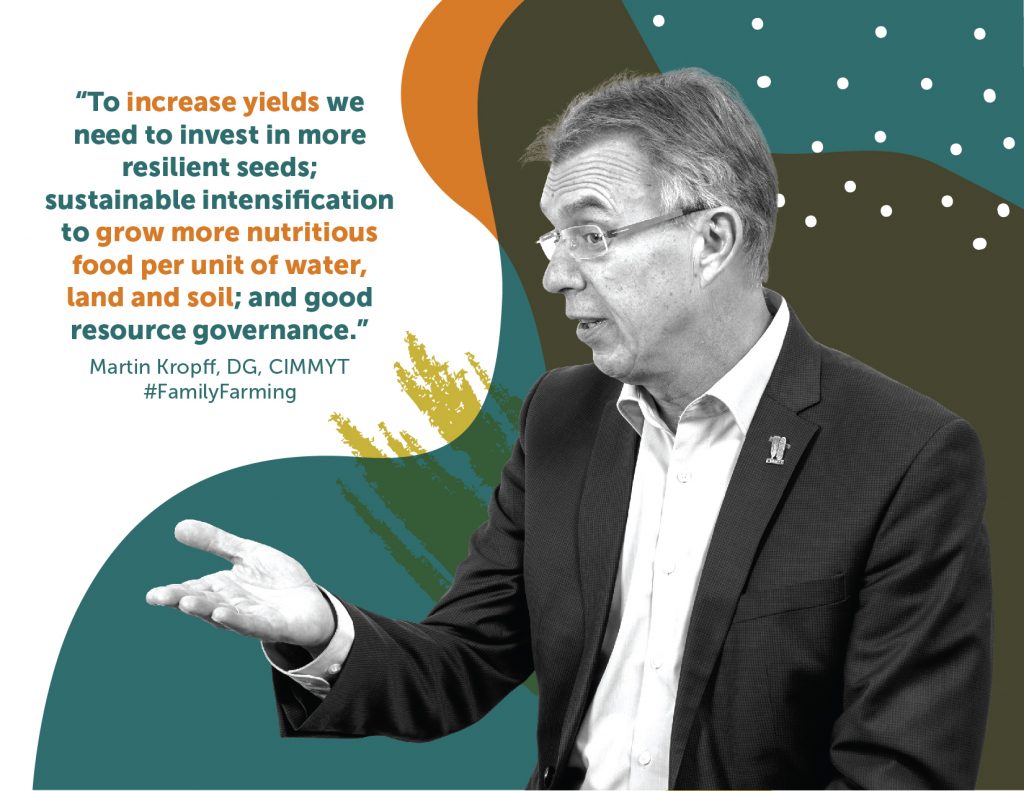 On the transformations that need to happen
On the transformations that need to happen
KROPFF: If we want to keep youth engaged, and improve farmers’ livelihoods, I think farming needs to become more entrepreneurial. Many family farms are only half a hectare. I think this has to grow somehow, though land rights and ownership are a challenge
NICHOLLS: As farming becomes more business-like in Africa then we’re going to see the same sort of consolidation that we saw in the United States and Europe, whereby farm sizes do get larger even if land ownership remains fragmented.
This could happen through cooperatives, which offer economies of scale and also help farmers spread the costs of things like access to inputs, advice, weather insurance and crop insurance. But we need to view cooperatives as more than a way to infuse new technologies into the farming system. They are in fact a channel for helping farmers gain stronger business skills, so they can get a better bargain for themselves.
KROPFF: In Mexico we are working with 300,000 smallholder farmers in a sustainable maize and wheat sourcing initiative. Rather than “pushing” new varieties and technologies at farmers, we help them partner with maize and wheat companies to create a local demand for high quality, sustainable products. Real scaling up, especially for wheat and maize, needs more than extension. Farmers need better links to the market.
NICHOLLS: If farms get larger and more mechanized, it means fewer people are involved in the business of farming. This shift means that people will need other rural occupations, so that they don’t just leave the land and move to the city. We need investments in other productive activities in rural areas. This could be around post-harvest processing of crops: adding value locally rather than shipping the raw materials elsewhere.
KROPFF: Exactly. We’ve been doing more work on this in the last ten years. CIMMYT works on wheat and maize, and these are products that need to be processed. Doing this locally would also help people save food in the future for more difficult times, instead of selling to someone from the city who may buy it for an unfair price. Farmers these days have access via smartphones to market information, which is empowering. We see it happening in Africa. It’s really crucial.
NICHOLLS: We’re certainly seeing the power of digital technologies, which are also helping us move beyond just responding to crop pests and diseases to being able to get better at predicting outbreaks on a micro-scale. By linking ground observations through our Plantwise clinics with satellite observation technology and data, we’ve developed a program called PRISE (Pest Risk Information SErvice), which provides farmers with alerts before a pest is likely to reach its peak point, so that they can be prepared and take preventative measures.
KROPFF: Without a doubt, smallholder farmer communities are rapidly entering the digital age, and tools on weather prediction, selection of varieties, market information are very important and transforming the way people farm.
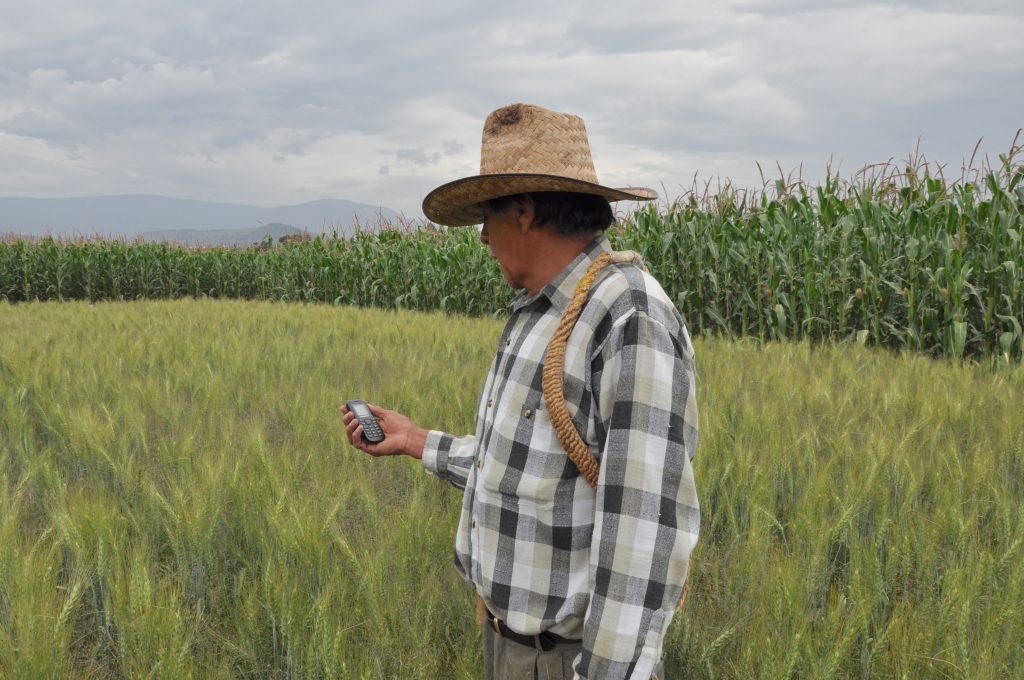
On climate change
KROPFF: Climate change is going to be the issue affecting family farmers, especially in Asia and Africa where the population will grow by 2 billion people who need food that has been produced on their own continents. Yields have to rise and climate change brings yields down. We have to help smallholder family farmers keep doing their job and ensure crop yields, which is why climate change is embedded into 70% of our work at CIMMYT. One major area is developing and testing heat- and drought-tolerant varieties that suit local climates. Last year I was in Zimbabwe, which was experiencing El Niño, and I was very impressed by the difference in maize yields from drought and heat-tolerant varieties compared to the normal varieties.
NICHOLLS: That’s very good. In addition to drought and heat, we see pests and diseases appearing in new places as a result of climate change. Pests and diseases will cause crop losses of up to 40% on average. Stemming those losses is critical. We’re seeing invasive species, such as fall armyworm, and many invasive weeds and trees that are effectively stealing arable and pastoral land from farmers, as well as water resources.
Pest-resistant crops have great long-term potential, but farmers also need short-term solutions while they wait for new varieties to become available. One of CABI’s strengths is scanning for solutions from other parts of the world. With fall armyworm, we are looking to South America, where the pest originates, for solutions and natural enemies. We’re also scanning our fungal culture collection for samples that may have properties that can form the basis for biopesticides, and therefore open up a program of biological control.
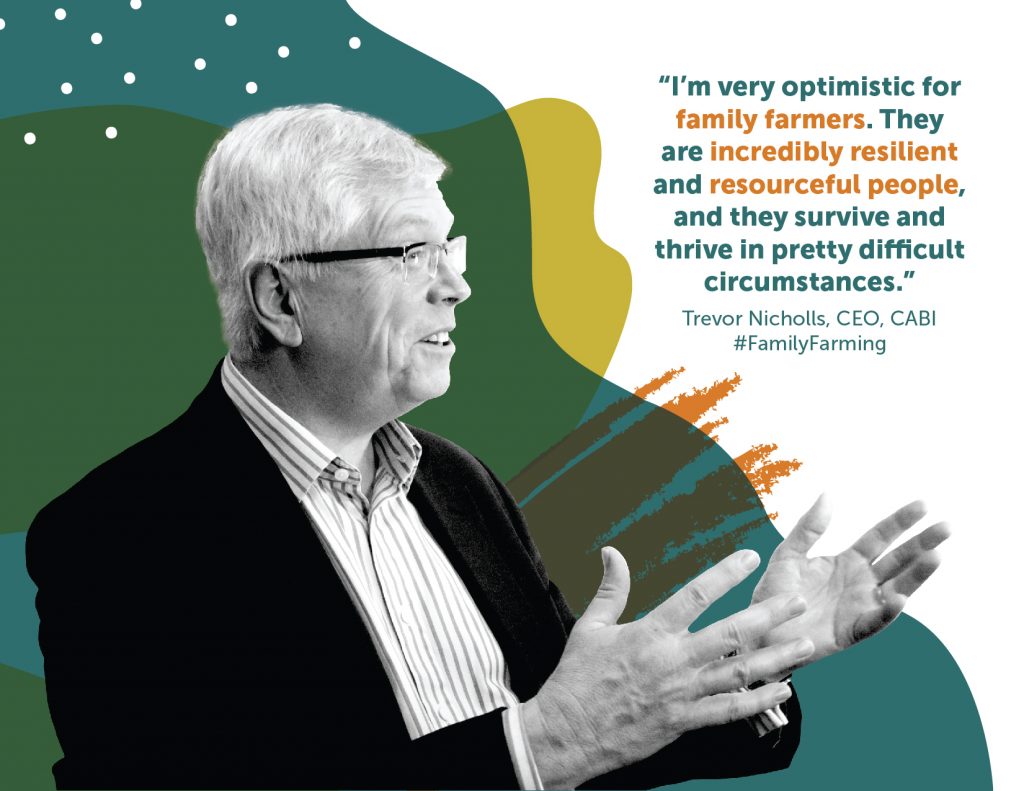
Hopes for the future
NICHOLLS: I’m very optimistic for family farmers. They are incredibly resilient and resourceful people, and they survive and thrive in pretty difficult circumstances. But the world is getting more challenging for them by the day. I think the Sustainable Development Goals (SDGs) have framed many of the issues very well, in terms of food security and livelihoods, sustainable consumption and production, and this will help to focus attention on family farmers.
I do see some quite encouraging signs, particularly in Africa, where the CAADP (Comprehensive Africa Agricultural Development Programme) has brought much greater coordination among countries. We’re seeing more unity in the requests we receive from our member countries to help them address the issues that are in the SDGs. That makes the work of our organizations easier, because we’re addressing a broader set of demands. And in turn, that will benefit family farmers.
Technology, be it biotechnology or telecommunications and ICTs, is becoming so much more affordable over time. The rate that smartphone usage is spreading in Africa and Asia is incredible. In many areas we actually have most of the technology we need today. It’s about getting it put into practice effectively with large numbers of farmers. So I remain very optimistic about the future.
KROPFF: I’m an optimist by nature. That’s also why I’m in this job: it’s not easy, but I really believe that change is possible if we have our act together and collaborate with CABI and other international research partners, national systems and the private sector. For a long time, people said that there was no Green Revolution in Africa, where yields remained one ton per hectare. But today we see yields increasing in countries like Nigeria, and in Ethiopia, where maize yields are 3.5 tons per hectare. Good things are happening because of family farming.
I believe that to increase yields you need three components: better seeds for more resilient crop varieties; sustainable intensification to grow more nutritious food per unit of water, land and soil; and good governance, to properly manage resources. We need to invest in all of these areas.
NICHOLLS: I fully agree. We need to work on all these areas, and harness the power of modern technology to help family farmers thrive now, and in the future.
This interview has been edited for length and clarity.
Learn more about key actions needed to support family farmers: CIMMYT and family farming
Join the conversation at #FamilyFarmingDecade.
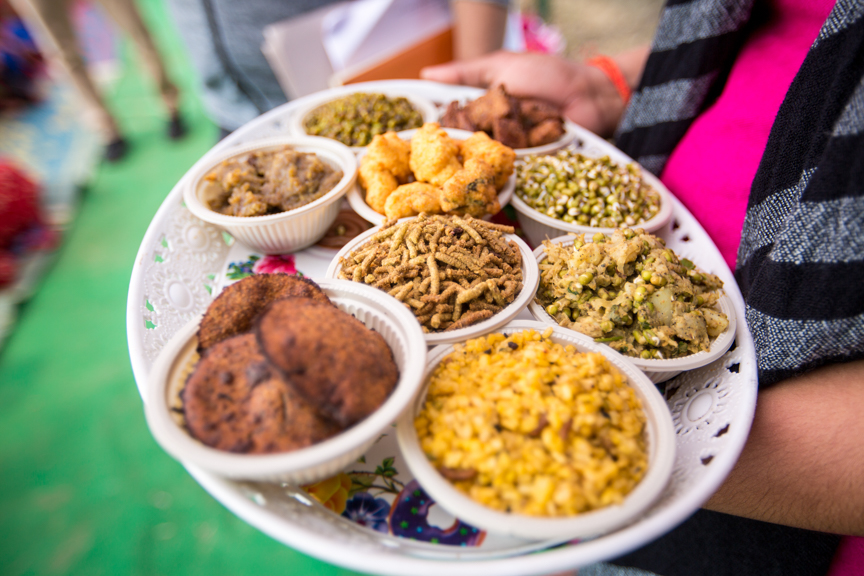
 Innovations
Innovations 